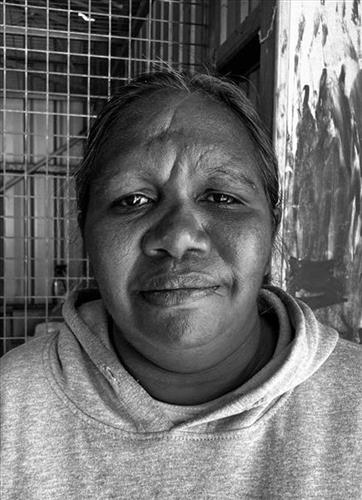111582324478
Pinarti Seeds
[The] old people used to collect [the seeds] to attach to their hair and keep the fly out… they glue it in and wax it up with spinifex [resin]. They thread it up using their hair and make it into necklace. – Nola Taylor
They’re seeds you find in the tree, you know. Red, orange, mixed colours yeah, yellow and brown. I seen her (Nola) collect it (Pinarti seeds) there, she collects it in her basket. – Jenny Butt
Martu country is home to incredibly diverse flora. Many of these plants are significant food sources, important bush medicine or celebrated for their aesthetic splendour.
The Pinarti tree or Erythrina vespertilio is one such example of this. The tree can be found along watercourses, and during the summer it produces Pinarti seeds. These seeds are often collected by Martu women who use them as beads for necklaces. As the seeds are vibrant red, orange and yellow they make for a colourful adornment.
The seeds also have a practical application as fly deterrents. By attaching them to their hair with spinifex resin, Martu are able to ustilise the weight and movement of the seeds to keep flies away from their face. This artwork celebrates the vibrancy of the Pinarti seeds and recognises the important role they play in Martu culture.




